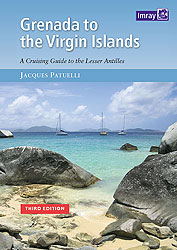| |
|

Where to stay and what to see
There is a large choice of hotels. The most luxurious are in the bay of Fort de France, mainly round the small marina of Pointe du Bout over which towers the imposing bulk of the Hotel Kalenda (formerly Méridien). In the southern communes the hotels and guesthouses are mostly simpler, often beside lovely beaches lined with coconut palms.
Restaurants use local produce from both market gardens and fishing boats, either Martiniquais or from neighbouring islands.
In the main tourist areas (Fort de France and the leeward coast) restaurant prices are higher than in the small villages in the N of the island and on the windward coast.
 In addition to its own natural beauty, on its Atlantic coast Martinique has scores of islets, bays and inlets set within an immense barrier reef. For the most part the green slopes of the mountains end in numerous sandy beaches sprinkled the length of large bays or tucked away in the small ones. Thanks to its varied relief, the island offers a wonderful range of possibilities for inland travel: In addition to its own natural beauty, on its Atlantic coast Martinique has scores of islets, bays and inlets set within an immense barrier reef. For the most part the green slopes of the mountains end in numerous sandy beaches sprinkled the length of large bays or tucked away in the small ones. Thanks to its varied relief, the island offers a wonderful range of possibilities for inland travel:
In the mountainous N the thick tropical forest around Mont Pelée and the Pitons du Carbet.
In the centre the low-lying hinterland, covered with plantations, which links Fort de France with the windward coast.
In the S the low hills, flattening out towards the ancient swamps near the Savane des Pétrifications.
An excellent road network serves all of Martinique. Because the terrain becomes less steep and broken towards the centre and S of the island, that’s where the network is at its densest, sometimes reaching expressway status and often with heavy traffic.
|
|
|
|
Fort de France
The town is the base of regional government (Préfecture) and nearly one third of Martinique’s population lives within its extensive built-up area. Its lively centre spreads out to the residential quarters in the surrounding hills. The prettiest of the latter, the Quartier de Plateau-Didier has fine examples of colonial houses and a superb panoramic view over the large bay of Fort de France. The nearby Fontaine Didier is a thermal spring with therapeutic properties which has been used for some 150 years. The town of Fort de France has only a few monuments attesting to the various catastrophes to which it has been victim, for example the great fire of 1890. It’s best to look round on foot because the central area is quite small and it gets choked with traffic at peak hours. Fort St Louis dominates the bay and houses the museum of pre- Columbian history. Its ramparts lie beside the Place de la Savane which is the heart of the town. The park here, planted with all kinds of flowers and hundred-year-old trees, is where the whole town gathers and strolls around. It is home to the white marble statue of the Martinique-born Empress Joséphine. There are numerous bar-restaurants around its sides and to the W lies the business district. St Louis cathedral, a recent edifice replacing a succession of churches destroyed by earthquakes and fires, lies in the heart of the business district, cheek by jowl with the bubbling and colourfully varied street life. Every day W of the cathedral the central vegetable market fills the morning air with its fruity, spicy smells.
Besides the cathedral the Schoelcher Library is worth a detour for its quaint building in an eclectic architectural style brought back from the Universal Exhibition in Paris in 1889. Opposite the Schoelcher Library the Préfecture is a fine and imposing example of French governmental architecture, inspired as it was by the 17th century. In the Rue de la Liberté on the W side of the Place de la Savane, you’ll find the departmental museum, which focuses on the history of the island.
Around the island :


|
|
|








